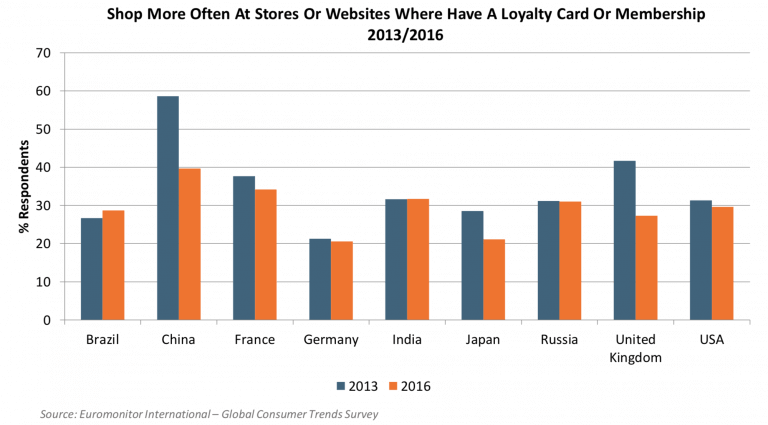
Loyalty is on the verge of major disruption. Technology, such as mobile and blockchain, are forcing traditional loyalty models to adapt and become dynamic to remain relevant in an ever-saturated market.
The travel industry has a long tradition of loyalty schemes thanks to hotel reward nights, frequent flyer airline programs, and co-branded credit cards. There are several different types of loyalty program structures with a wide range of benefits, such as points, free gifts, discounts, free shipping, exclusive events, tiers, and the like. However, the average consumer is suffering from loyalty fatigue.
According to the 2017 Colloquy Loyalty Census, the average U.S. household has 30 loyalty schemes, but 54 percent of them are inactive. To optimize every single scheme seems unachievable to many, bar those that thrive on the challenge of points collection and redemption.
According to Euromonitor International’s Global Consumer Trends Survey, only 28 percent of consumers globally said that they shopped more often at stores or websites where they have a loyalty card or membership in 2016, with the influence of loyalty declining, down from 34 percent in 2013.
The UK and China have both seen a sharp drop-off in consumers shopping at stores where they have a loyalty card, which can be attributed to recovery after the global economic crisis in the case of the UK and the shift to mobile sales. The relatively low level of mobile readiness of loyalty programs especially in such a mobile-first market like China represents a real challenge for travel brands in terms of consumer retention.

REDEFINING LOYALTY
The traditional business model for loyalty is distinctly flawed and clunky, with each loyalty scheme tending to exist in silo or within the confines of a coalition. To help reverse loyalty’s dwindling impact, it is increasingly vital to view loyalty as a fundamental pillar of the “Experience More” framework – key to building a long-lasting consumer-brand relationship. This means brands need to strive for a seamless customer experience that is delivered in real time and is context specific that will enhance the consumer’s experience and ultimately drive loyalty and repeat purchases.




